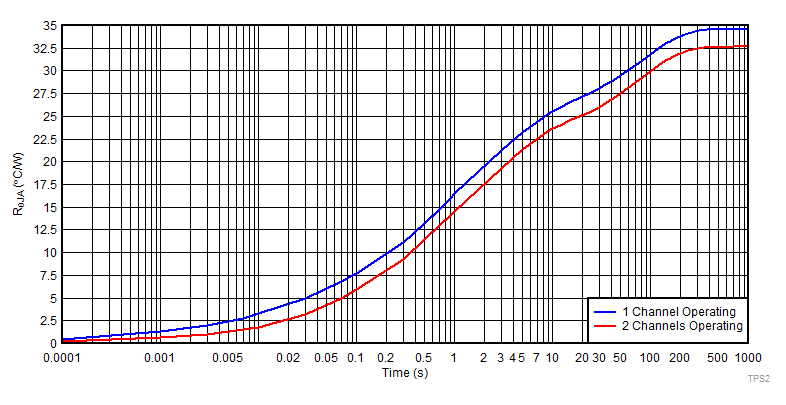SLVSDV7C February 2018 – February 2020 TPS2HB16-Q1
PRODUCTION DATA.
- 1 Features
- 2 Applications
- 3 Description
- 4 Revision History
- 5 Device Comparison Table
- 6 Pin Configuration and Functions
- 7 Specifications
- 8 Parameter Measurement Information
-
9 Detailed Description
- 9.1 Overview
- 9.2 Functional Block Diagram
- 9.3
Feature Description
- 9.3.1 Protection Mechanisms
- 9.3.2 Fault Event – Timing Diagrams - Version F
- 9.3.3 Diagnostic Mechanisms
- 9.4 Device Functional Modes
- 10Application and Implementation
- 11Power Supply Recommendations
- 12Layout
- 13Device and Documentation Support
- 14Mechanical, Packaging, and Orderable Information
Package Options
Mechanical Data (Package|Pins)
- PWP|16
Thermal pad, mechanical data (Package|Pins)
- PWP|16
Orderable Information
10.1.7 Thermal Information
When outputting current, the TPS2HB16-Q1 will heat up due to the power dissipation. The transient thermal impedance curve can be used to determine the device temperature during a pulse of a given length. This RθJA value corresponds to a JEDEC standard 2s2p thermal test PCB with thermal vias. The RθJA will vary depending on whether the power dissipation is concentrated in a single channel or is distributed evenly between each channel.
 Figure 47. TPS2HB16-Q1 Transient Thermal Impedance
Figure 47. TPS2HB16-Q1 Transient Thermal Impedance